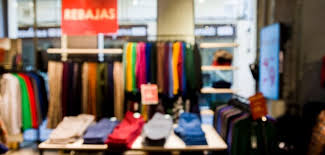The Essence of Stores: A Hub of Convenience and Exploration
Stores play a vital role in our daily lives, serving as hubs of convenience and exploration. Whether it’s a bustling supermarket, a quaint boutique, or a high-end department store, these establishments offer more than just products – they provide experiences.
One of the key aspects that make stores so essential is their convenience. With everything neatly organised and displayed, customers can easily find what they need without having to search extensively. From groceries to clothing to electronics, stores cater to a wide range of needs under one roof.
Moreover, stores offer a sensory experience like no other. The sight of colourful displays, the sound of bustling activity, the aroma of freshly baked goods – all contribute to creating an immersive environment that engages customers on multiple levels. It’s not just about making a purchase; it’s about enjoying the process.
Stores also serve as hubs for exploration and discovery. Customers can stumble upon new products, brands, or trends that they may not have encountered otherwise. This element of surprise and serendipity adds an element of excitement to the shopping experience, turning a routine errand into an adventure.
Furthermore, stores provide opportunities for social interaction. Whether it’s chatting with fellow shoppers, seeking advice from knowledgeable staff, or simply people-watching, stores foster connections and community engagement. They are spaces where people come together, share stories, and build relationships.
In conclusion, stores are more than just retail outlets; they are vibrant spaces that enrich our lives in various ways. They offer convenience, sensory stimulation, exploration opportunities, and social connections – all wrapped up in one dynamic package. Next time you step into a store, take a moment to appreciate the multifaceted experience it offers beyond just shopping.
Frequently Asked Questions About Stores: Popularity, Terminology, Definitions, and In-Store Retail
- What is the most popular shopping store?
- Which is correct store or stores?
- What is the full meaning of store?
- What is instore retail?
What is the most popular shopping store?
The question “What is the most popular shopping store?” is a commonly asked query that often sparks debates and discussions among consumers. While determining the absolute most popular shopping store may vary depending on factors such as location, demographics, and personal preferences, several well-known retail giants consistently rank high in terms of popularity and customer loyalty. Stores like Amazon, Walmart, Tesco, and Target are often cited as top contenders due to their extensive product offerings, competitive pricing, convenient locations, and strong brand reputation. Ultimately, the answer to this question may differ from person to person based on individual shopping habits and needs.
Which is correct store or stores?
The distinction between “store” and “stores” lies in their usage as singular and plural forms, respectively. “Store” refers to a single retail establishment or a place where goods are sold, while “stores” is the plural form indicating multiple such establishments. Therefore, when referring to one specific retail outlet, the correct term to use is “store,” whereas if discussing more than one such establishment, the appropriate term would be “stores.” Understanding this subtle difference ensures accurate communication and clarity in conveying information about retail locations.
What is the full meaning of store?
The term “store” has various meanings depending on the context in which it is used. In the retail industry, a store typically refers to a physical establishment where goods or products are sold to customers. It serves as a commercial space where transactions take place between buyers and sellers. However, beyond its retail connotation, the word “store” can also signify a reserve or supply of something, such as storing information on a computer or storing food for future consumption. Essentially, the full meaning of “store” encompasses both the physical retail outlet and the act of preserving or accumulating items for later use.
What is instore retail?
Instore retail, also known as brick-and-mortar retail, refers to the traditional method of selling products and services in physical stores rather than online or through other remote channels. It involves customers visiting a physical location to browse, select, and purchase items directly from the store’s inventory. Instore retail provides a hands-on shopping experience where customers can interact with products, receive personal assistance from staff, and make immediate purchases. This approach allows for immediate gratification and sensory engagement that online shopping may not always offer. Additionally, instore retail enables retailers to create a unique atmosphere, build relationships with customers, and showcase their brand in a tangible way.



